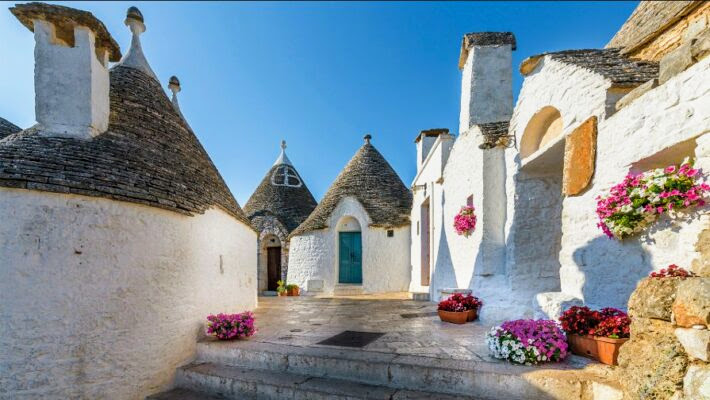
Alberobello is an Italian village in the province of Bari, located in the heart of Puglia, near the Murgia hills and the Valle d’Itria; it has become one of the region’s main feathers in the cap thanks to its status as the “Capital of Trulli.”

In ancient times, the area of Alberobello was overgrown with dense vegetation, which explains its name.
In fact, Alberobello derives from the Latin Sylva Arboris Belli, meaning “forest of the tree of war.”

The village was officially established in the late 1400s, at the behest of the Counts of Conversano, who owned the territory at the time and entrusted the work to some peasants.
The law of the time, imposed by the Kingdom of Naples, included the so-called “Pragmatica de Baronibus”, for which every new town was subjected in the first instance to the Royal Wormwood, through the payment of specific tributes.
For this reason, the Counts instructed the peasants to colonize the area by building only precarious houses, the trulli, which could have been easily demolished in case an inspection took place.
It was not until 1797 that Alberobello was freed from any tax demands and the feudal servitude of the Counts, thanks to a decree issued by King Ferdinand IV.
From that moment on, the trulli began to be seen by many and recognized for their beauty and uniqueness, so much so that in 1996 they became a UNESCO World Heritage Site.

In fact, the historic center of the village has more than a thousand trulli inside, characteristic for their dry construction, that is without mortar, with handcrafted stones carved and interlocked with each other.
Typically white in color, with conical-shaped roofs, decorated with pinnacles and symbols linked to the primitive, magical and Christian world, the trulli divide the town into neighborhoods and districts, such as the Rione Monti, the most famous, in which to admire the Siamese Trulli: two centrally fused cones which, according to legend, symbolize the story of love and hate that engulfed two brothers, and the Trullo church built in 1930; and the Rione Aia piccola, the smallest in the historical centre.
Without forgetting the Trullo Sovrano, the only one with two floors and outfitted with original furniture from the 1900s; Casa Pezzolla made up of 15 communicating cones and Casa D’Amore, a historic house from 1797.
In the new area, there is the Basilica of Saints Medici, celebrated in September with a religious and non-religious festival.
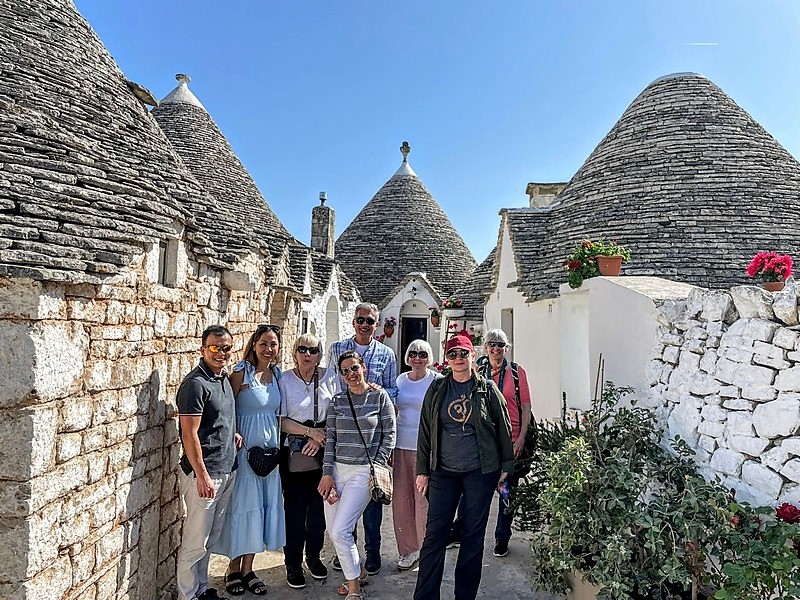

Finally, you cannot miss the taste of the typical product of the place: the Pasqualino.
A typicality born in the late 60s, which consists of a simple sandwich, the so-called rosetta, filled with tuna, capers, salami and provola.
In delicatessens today, there are many variations, for example with pickled vegetables or with various pickles (e.g. mushrooms, sun-dried tomatoes, etc.) but if you ask for the traditional one, only at the first bite will you understand why it is still among the cult of this small town.
The origins? Some say it was the invention of a delicatessen owner, Pasquale dell’Erba who initially proposed it to a group of young people.
It was then increasingly requested by the students who passed it on their way to school and ordered it for recess.
In short, a dish to be enjoyed!

Photo credit: alberobello.com
Ready to experience Puglia with us?
So if you’re tired of the same-old same-old city tours of Rome or Venice, why not experience the authentic Italy of Abruzzo and Puglia together?
Get in touch today to help bring your dream tour into focus – wouldn’t you love to see the Adriatic sea from the mountains or to have a lunch suspended over the sea? If you are ready to discover Puglia, Italy with us, you can find all the details of our most popular tour at: The Abruzzo, Puglia & Matera experience.
And if you’re not quite ready to make an inquiry, sign up for our free email course to learn everything you need to know about planning a tour of Abruzzo and Puglia.
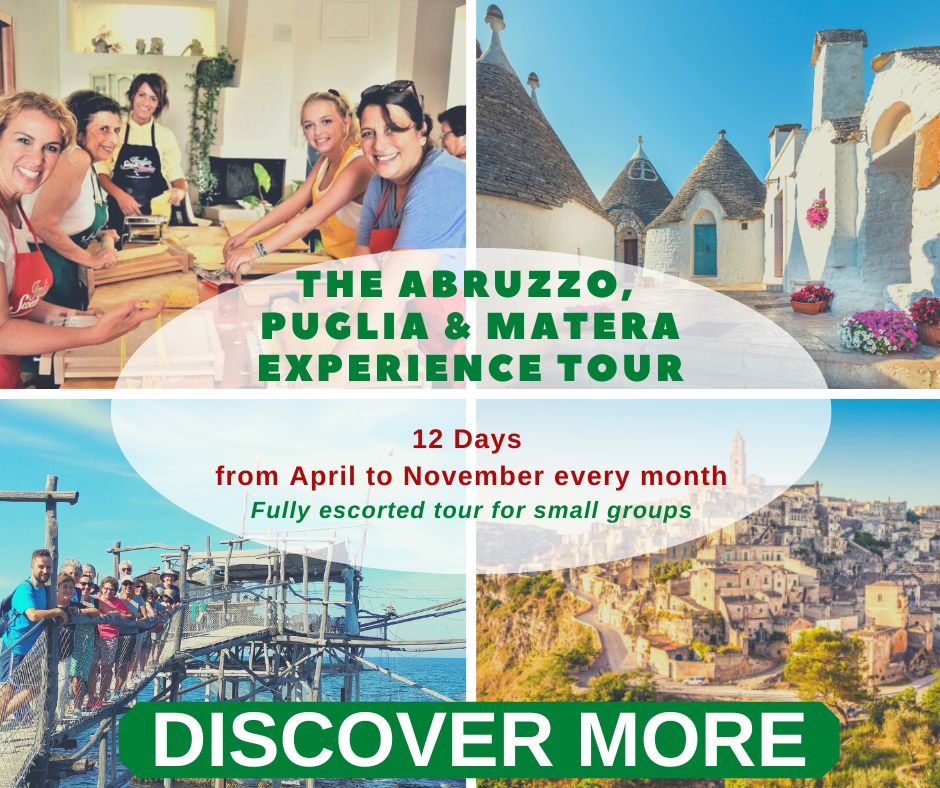
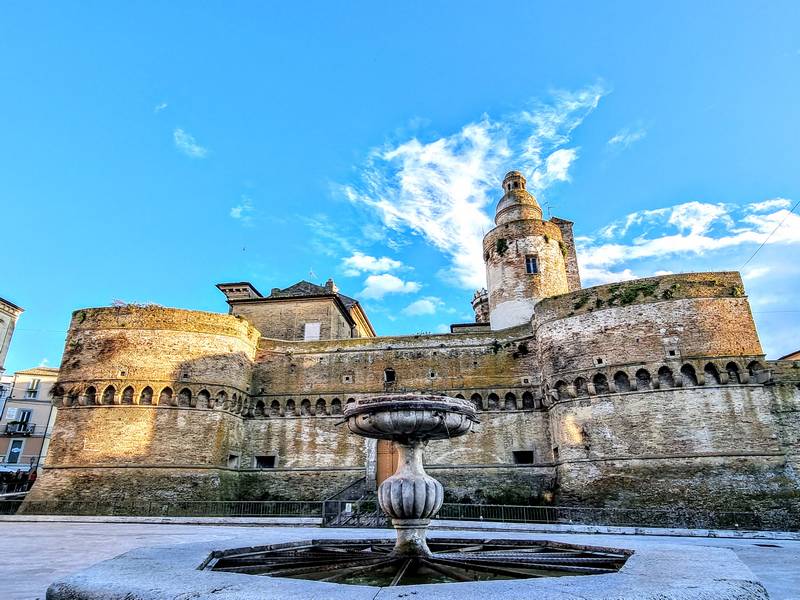
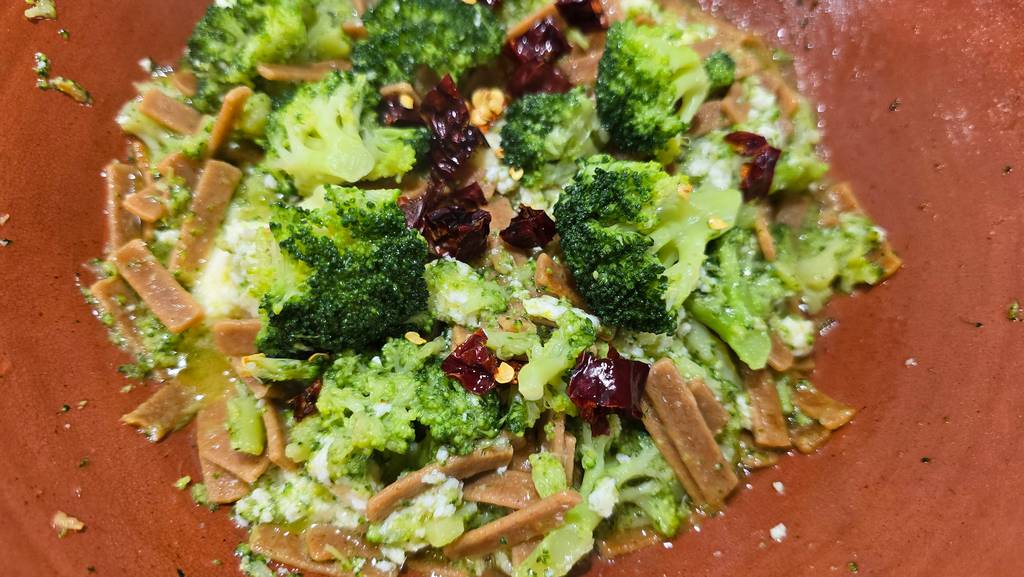
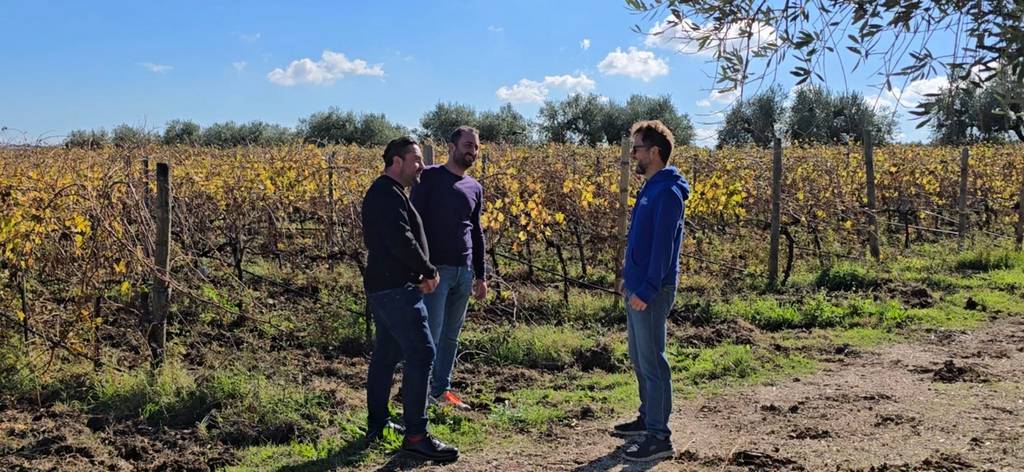

2 thoughts on “Alberobello, the “Capital of Trulli””
My fathers family was from Alberabello and mothers family from Potenza. My husband’s mother’s family originated in Campobasso.
Would it be possible to visit all those towns in a tour ?
Buongiorno Laurene,
many thanks for sharing with us your family information.
I just sent you an email.
Thank you.
Grazie and ciao for now
Fabrizio